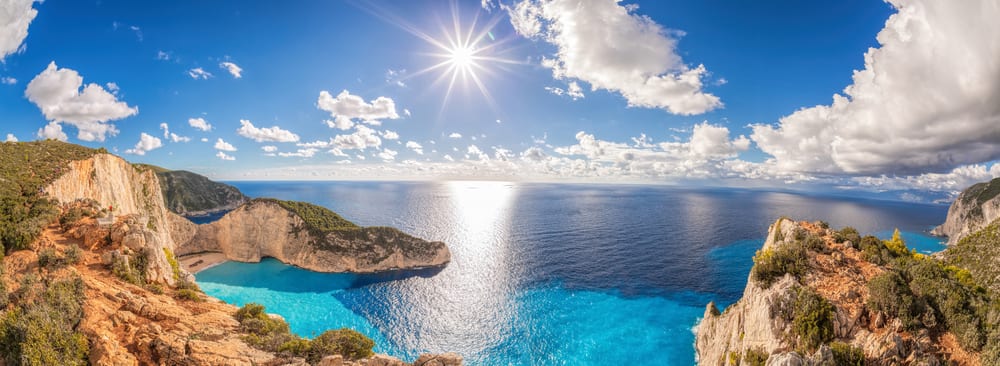Inspired by Helios, the Greek sun god
Inspired by Helios, the Greek sun god
Inspired by Helios, the Greek sun god
-
Hannah
-
Hannah


This sandy-hued island of eternal azure skies, ever-changing blue sea, beaming sunshine and ancient stone temples…
Welcome to Helios, the setting for my novel Aphrodite’s Tears.
Helios is a small island in the Ionian Sea that is privately owned by the Lekkas family. It is fictional, inspired by my travels around the real Greek islands (most memorable of which was my honeymoon on Rhodes and Santorini).
Choosing a name for this island was easy for me. When I think of the Greek islands, I think at once of the sun. ‘Even the sunlight seemed to have a particular quality of its own,’ I write in Aphrodite’s Tears. So I named the island after the sun god of Greek mythology.
Helios was not only the god of the son, in fact, but its personification: he was the sun. He was the son of Titans, and his siblings were Selene, goddess of the moon, and Eos, goddess of the dawn.
According to legend, each day Helios rode a chariot pulled by the fiery horses Pyrois, Aeos, Aethon, and Phlegon across the sky from sunrise to sundown. Some confusion arose when Latin scribes began to attribute that job to the Olympian god Apollo; but scholars agree that Helios was the true sun god, while Apollo had many more strings in his bow – he was the god of music, truth and prophecy, healing and poetry.
Here is Helios depicted an artefact dating back to 430 BC:

[Source: British Museum]
Aside from his important job of pulling the sun across the sky, Helios was an important god because of the offspring he produced with different partners, an astonishing number of sons and daughters who play a part in the stories of Ancient Greece. Take the Horae, for example, his daughters by the moon goddess Selene (yes, his sister): each represented a season – Eiar (spring), Theros (summer), Phthinoporon (autumn) and Cheimon (winter).
I was most haunted by the story of the Heliades: Aetheria, Helia, Merope, Phoebe and Dioxippe. They were Helios’s daughters by the water nymph Clymene. When their brother, Helios’s son Phaëton, stole Helios’s chariot, he could not control the horses. To prevent him setting the world alight, Zeus struck him down with a thunderbolt, and fell to his death. The Heliades were distraught, and their grief was boundless. Finally, the gods could take no more of their agonies, and so they turned the sisters into poplar trees on the bank of the river into which Phaëton plunged. Still, though, the sisters cried – only now tears of amber.
Those amber tears were in my mind as I wrote Aphrodite’s Tears, and so I wove in a nod to the grief-stricken sisters: the Lekkas family mansion on the island is named Heliades. Of course, the god himself is honoured there too:
The grand edifice had two rows of tall windows with beautifully carved shutters and wrought-iron balconies gracing the top floor. Its front was pillared in a neo-classical style, topped with a pediment decorated with a sculpture of Helios, the glowing sun god, represented here in its Greek interpretation by a gigantic eye surrounded by a halo, observing everything his light could touch.
Homer described Helios as the god who sees and hears everything. Sometimes, he acted upon his omniscient knowledge as well. When the goddess Aphrodite, who was married to Hephaestus, had a passionate liaison with Ares, for example, Helios told Hephaestus – who set out to humiliate the pair.
On my imagined island of Helios, the heroine, Oriel, would do well to remember that while the sun makes this landscape beautiful and inspires feelings of warmth and passion, it sees all. And some of what Helios of the sky sees down on Helios the island may give cause for concern. There is love on this island, and pride and loyalty, but also an undercurrent of darkness that the sun cannot touch. Will Oriel be plunged into darkness, and if so, who can lead her to the light?